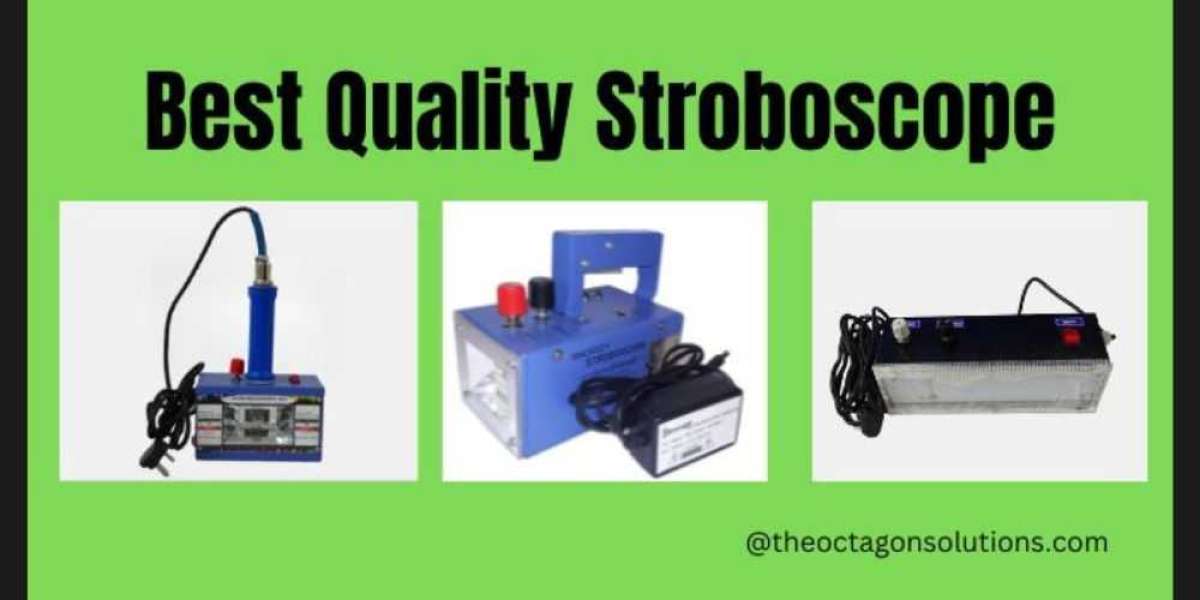A stroboscope is a fascinating optical instrument that has become a cornerstone in various industries and scientific fields for observing and analyzing high-speed motion. Also known as a strobe light, it produces short bursts of intense light at precise frequencies, creating the illusion of slowing down or freezing fast-moving objects. This powerful tool allows professionals to gain valuable insights into machinery performance, motion analysis, and synchronization tasks, contributing significantly to advancements in technology, research, and quality control processes. In this article, we delve into the world of stroboscopes, exploring their working principle, applications, and impact on diverse fields.
The Working Principle of a Stroboscope.
The fundamental working principle of a stroboscope relies on the concept of synchronization. It involves emitting brief flashes of light that coincide with the periodic motion of the object being observed. The flash frequency is carefully adjusted to match or be a multiple of the object's motion frequency. When the two frequencies align, the stroboscope creates the stroboscopic effect—an optical illusion where the object appears to be motionless or moving in slow motion. This effect occurs due to the phenomenon of persistence of vision, where our eyes retain an image for a short duration after it disappears from our sight.
For example, if an object is rotating at 60 revolutions per minute (RPM), and the stroboscope's flash frequency is set to 60 Hz or 3600 flashes per minute (FPM), the object will appear stationary when observed through the stroboscope. Similarly, adjusting the flash frequency slightly higher or lower than the object's motion frequency results in the object appearing to move in slow motion, allowing for detailed observation and analysis.
Applications of Stroboscopes
Stroboscopes find diverse applications across industries and scientific fields, making them indispensable tools for professionals seeking precise motion analysis and real-time observation. Some key applications include:
Machinery Maintenance and Troubleshooting: Stroboscopes are widely used in machinery maintenance to inspect rotating components such as gears, pulleys, and conveyor belts. By synchronizing the stroboscope's flashes with the rotational speed of machinery, maintenance personnel can identify defects, misalignments, or irregularities that might affect equipment performance. This early detection allows for timely troubleshooting and reduces downtime.
Quality Control and Synchronization: In manufacturing industries, stroboscopes play a vital role in quality control processes. By matching the stroboscope's flash frequency with the frequency of moving parts in assembly lines, production processes, or printing presses, operators ensure proper synchronization. The stroboscope's illumination reveals any inconsistencies or irregularities in the production process, enabling adjustments and improving product quality.
Research and Education: Stroboscopes are valuable tools in scientific research and educational demonstrations. They enable the study of rapid phenomena, such as vibrations, oscillations, and fluid dynamics. In educational settings, stroboscopes are used to demonstrate concepts related to motion, periodicity, and frequency in physics and engineering.
Entertainment and Visual Arts: The stroboscopic effect has also found its place in entertainment and visual arts. In stage performances, stroboscopes are used to create captivating lighting effects, enhancing the overall experience for the audience.
Types of Stroboscopes
Stroboscopes come in various types, each designed to cater to specific applications and requirements:
Fixed Stroboscope: Permanently installed for continuous monitoring and inspection in specific workstations or machinery.
Portable Stroboscope: Handheld and lightweight, offering mobility for on-site inspections and troubleshooting tasks.
Tube Stroboscope (U-Tube Stroboscope): Utilizes U-shaped flash tubes for wider coverage and uniform illumination, ideal for inspecting rotating components.
Handheld Stroboscope (LED Hand Model Stroboscope): Compact and easy to operate manually, featuring LED lights for adjustable flash frequency and intensity.
Conclusion
Stroboscopes have revolutionized motion analysis and observation in diverse industries and scientific research. Their ability to create the stroboscopic effect, freezing high-speed motion, and enabling detailed analysis has made them indispensable tools for maintenance, research, quality control, and entertainment. Whether in machinery maintenance, manufacturing, research laboratories, or stage performances, stroboscopes continue to illuminate the world of motion, unlocking the secrets of high-speed phenomena and advancing our understanding of the dynamic universe we inhabit.
Read more:- Fixed Stroboscope || Industrial Stroboscope || Stroboscope || Portable Stroboscope || Digital Stroboscope || Tube Stroboscope || Portable Stroboscope || Hand Model Stroboscope || LED stroboscope || Handy Stroboscope || stroboscope light



